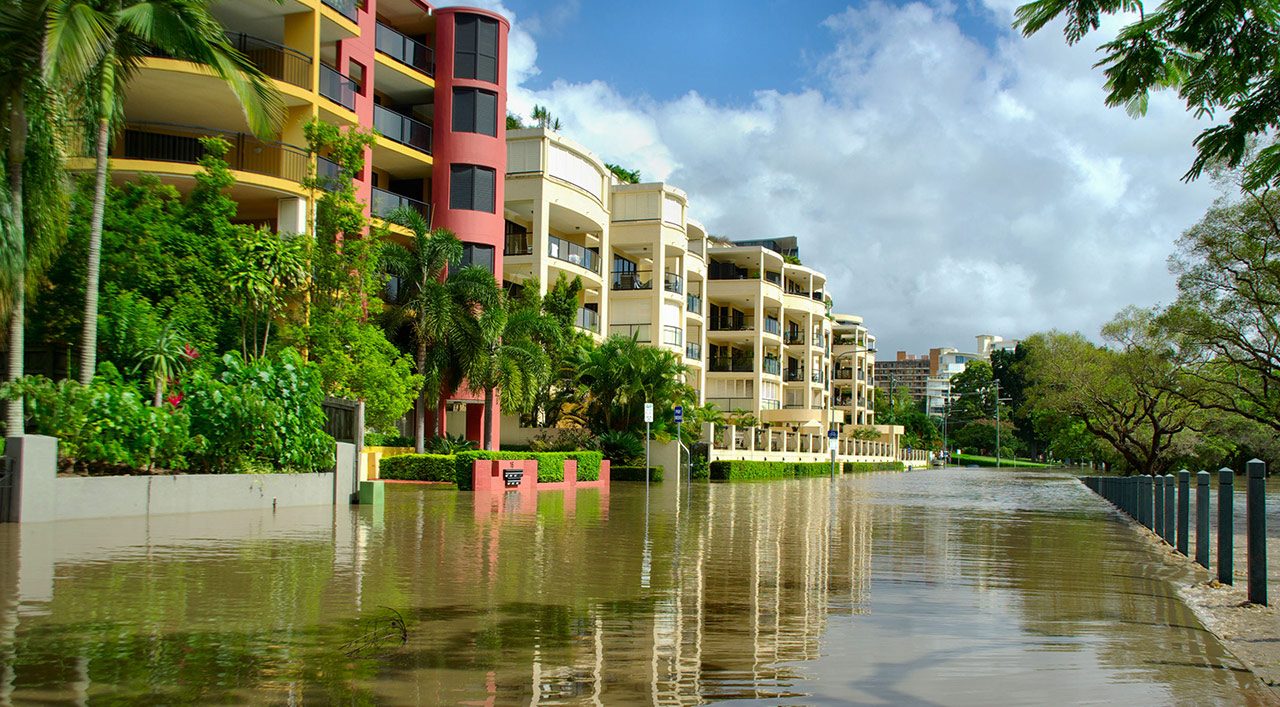This article is from the Australian Property Journal archive
HOUSES for sale in flood zones are around 10% cheaper than elsewhere, but those tempted by lower prices and a nice river view may find the indulgence comes back to bite them if an extreme weather event strikes – in addition to the hit from long-term insurance costs.
These are the findings of a new study, “Cognitive limits of perceived flood risk on residential property values”, lead authored by Song Shi and co-authored by Mustapha Bangura and Sumita Ghosh from UTS, which was recently published in the International Journal of Disaster Risk Reduction.
Home sales data from the Richmond area on the outskirts of Sydney was examined, along with 2019 and 2023 flood maps for the region. The researchers found a 10.8% price discount in the AEP 100 flood zone, 4.4% in the AEP 500 flood zone, and none in the AEP 1000 flood zone.
AEP – “Annual Exceedance Probability” – is used to express the likelihood of a flood occurring in a given area each year. AEP 100 is a 1% chance or a one-in-100-year flood risk, AEP 500 is a one-in-500-year flood risk, and AEP 1000 is a one-in-1000-year flood risk.
“Home buyers sometimes think that a ‘1-in-100-year flood risk’ means flooding will only occur once every 100 years, when in reality it means there’s a 1% chance of such a flood happening in any given year,” Shi said.
“The chance of a flood occurring at least once in an 80-year lifetime is 55% for a 1-in-100-year flood and 15% for a 1-in-500-year flood. The likelihood of experiencing such devastating floods over a lifespan is much higher than people might think.”
More residents are using digital flood maps to better understand their flood risk, the research found, and to plan for severe weather events. However, people tended to ignore flood risk beyond the AEP 500 flood risk zone. This can be dangerous as extreme rain events – such as those recently witnessed in Spain that resulted in 227 deaths – are rising due to climate change.
The paper said a “modern, accurate, and regularly updated flood risk rating system emerges as crucial for effectively communicating potential flood risk awareness and future financial costs to the public”.
“In Australia, more than one in 10 houses in Australia are situated in flood zones. Flooding from intense rainfall and overflowing rivers is the most common and costliest natural disaster,” Shi said.
Properties located in the high-risk zone take 38% longer to sell, according to the paper, while properties in the medium-risk zone sell 13 % faster, and there is no difference for properties in the low-risk zone, compared to properties in the extremely low or no risk zone.
The cost of insurance for a house in a flood zone is a “significant” financial burden. In Richmond, median-priced homes in the AEP 100 zone have an estimated flood premium potentially as high as $4,606 per year, compared to similar homes in a no-risk zone.
Residential properties exposed to flood risk are “overwhelmingly” overvalued, especially in coastal areas, the researchers warn, as property price discounts do not compensate for the additional insurance costs payable.
“As climate patterns intensify, understanding flood risk is becoming essential for both homebuyers seeking to make informed choices and policymakers aiming to safeguard communities and manage the impact on real estate markets,” the authors said.



